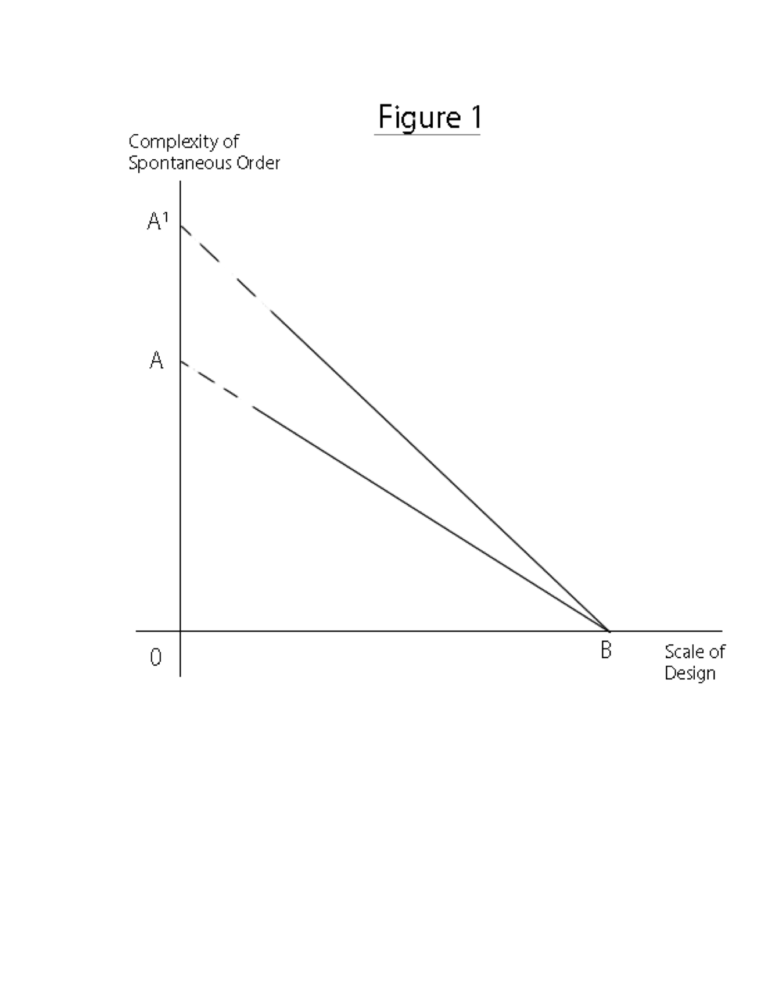Physical Address
304 North Cardinal St.
Dorchester Center, MA 02124
Physical Address
304 North Cardinal St.
Dorchester Center, MA 02124

How much should we blame planning for the degree to which cities sprawl? As much time as we (justifiably) spend here on this blog explaining how conventional U.S. planning drives excessive sprawl, it’s worth periodically remembering that, at the end of the day, the actual extent of the horizontal expansion of cities is largely outside the control of urban planning. Consider Houston. Whenever I say anything nice about Houston’s relatively liberal approach to land-use regulation, someone invariably comments some variation of the following: “Yes, that’s all well and good in theory. But in practice, heavily regulated cities like Boston are far more urban and walkable, so maybe relaxed land-use regulations aren’t so great.” Indeed, most of Houston is classic sprawl. But this begs the question: to what extent can urban planning policy be blamed for sprawl? The urban economist Jan Brueckner, drawing on an extensive literature, distinguishes between the “fundamental forces” that naturally drive urban growth outward and the market failures that push this growth beyond what might occur in an appropriately regulated market. (For the purposes of this post, I’ll be using “sprawl” and “horizontal urban expansion” interchangeably. In the same paper, Brueckner thoughtfully distinguishes the two.) The latter, urban planners can address. The former, not so much. Let’s look first at the “fundamental” variables that planners have little to no control over. Brueckner identifies three: population growth, rising income, and falling commuting costs. The first variable is obvious: as cities grow, demand for all housing goes up, and some of that housing goes out on the periphery regardless of planning policy. Metropolises like Houston, Dallas, and Atlanta are currently experiencing 2% population growth every year, meaning they are on track to double in population in the next 35 years. You would expect a lot of horizontal expansion, all else […]
I recently discovered a new logical fallacy: the “Morton’s Fork” fallacy. This argument is one in which contradictory observations lead to the same conclusion. For example, if I argue that new housing near public transit is bad because it (1) spurs gentrification by bringing rich people into the neighborhood and (2) increases crime by bringing poor people into the neighborhood, I am engaging in this fallacy. Similarly, I have heard arguments that new housing is bad because it (1) brings down property values and (2) increases property values. In such situations, it is sometimes possible that one of the two claims could be true, but it is unlikely that both claims could be true.
Viewing cities as spontaneous orders and not as works of art helps to explain the tradeoff between scale and order, as well as the role of time in softening the severity of that tradeoff. Complexity and creativity are at odds with scale and the comprehensiveness of design because increasing scale impinges on the action spaces where creative, informal contact tends to happen. Design might complement that informal contact to a point, but beyond a fairly low level it begins to overwhelm it. Again, small is not always beautiful, and big is sometimes unavoidable. That makes it all the more important to understand the impact of scale and design on spontaneous social orders. That applies as much to private as it does to public projects. When the designs are small relative to the surrounding social milieu, the downside of the tradeoff isn’t very steep. The problems start when budget constraints are soft and projects become mega-projects and mega-projects become giga-projects. I don’t want to sound too ideological – Jane Jacobs somehow avoided being ideologically pigeonholed all her life – but soft budget constraints are primarily the domain of governmental and, especially, of so-called public-private developments: Those elephantine-starchitectural-wonder-complexes that too-often strive for off-the-charts wow-factors. Without legal privileges, subsidies, and eminent domain, could the scale and degree of design of purely privately funded developments even begin to compare to those? I don’t think so. The rules of the game of urban processes interact in complex ways. So deliberately changing some of those rules to achieve a particular outcome is akin to trying to impose a particular design on the social order, killing the social order in the process, although perhaps preserving the appearance of life. Taxidermy again. (That, by the way, is why I have problems with landmarks preservation on the scale practiced […]
By Christopher Koopman and Josh T. Smith Facing a current housing crisis that is putting working families on the brink of homelessness, it would seem like California would have one of two options. The state could take steps to alleviate the growing problem. Alternatively, it could sit on its hands and do nothing at all. It seems, however, the state has found a third option: make matters worse. After it’s vote last week, the California Energy Commission took another step toward requiring all new homes under three stories to have solar panels installed beginning in 2020. Right now only between 15 and 20 percent of new single-family homes in California install rooftop solar. While solar may make economic and environmental sense for some, mandating it for all Californians will backfire by worsening the state’s housing affordability crisis, disincentivizing the building of newer, more energy efficient houses, and continuing to hurt the poor in a state that is already home to the highest rate of unsheltered homeless in the nation. The housing crisis in California is largely driven by a simple economic problem: housing supply has failed to keep up with demand. As the demand for homes in the Golden State has increased, the housing supply has failed to respond. Why? In particular, restrictive zoning policies continue to slow development and force prices up. Now people making $80,000 a year are having a hard time finding affordable housing. Make no mistake, skyrocketing housing prices are a growing problem in large cities across the country, but especially so in California. The 2017 Los Angeles Homeless Services Authority report estimated there was a 23 percent increase in homelessness from 2016 to 2017. That’s almost 11,000 additional people without homes. By mandating solar panels on all new houses, California’s regulators are essentially adding $9,500 to […]
Before we can correct what we think is wrong with a city, we need an appropriate standard of what is right. That standard of rightness in turn depends on our understanding how the thing we are trying to fix is supposed to work. In this regard I’m afraid neither standard macroeconomics nor microeconomics is much help at all. In traditional macroeconomics, too much important detail is lost in its pre-occupation with aggregates and averages. For example, standard macroeconomic theory treats capital as homogeneous, and so makes no distinction between a hammer and a harbor, except that a harbor may be the equivalent of many, many hammers. Such an approach is too blunt an instrument for getting to the level of detail needed to appreciate the complex time-structure of capital of an economy, let alone to tell us what would be necessary to promote that structure (Lachmann 1978). Jacobs expressed antipathy toward macroeconomics. Macro-economics—large-scale economics—is the branch of learning entrusted with the theory and practice of understanding and fostering national and international economies. It is a shambles. Its undoing was the good fortune of having been believed in and acted upon in a big way (Jacobs 1984: 6-7) Earlier in this Chapter we saw that, unlike a living city, a nation-state is not a natural unit of economic analysis. In Jacobs’s words: Nations are political and military entities, and so are blocs of nations. But it doesn’t necessarily follow from this that they are also the basic, salient entities of economic life or that they are particularly useful for probing the mysteries of economic structure, the reasons for rise and decline of wealth. Indeed, the failure of national governments and blocs of nations to force economic life to do their bidding suggests some sort of essential irrelevance (Jacobs 1984: 31-32). The […]
The needs of the aged are often a political football in disputes over transportation policy. On the one hand, defenders of low-cost parking and other car-oriented policies argue that older people all need cars because they can’t be bothered to walk. On the other hand, smart growth types argue that we will all be too old to drive someday, so we need to end the reign of car dependency. One way of examining the issue is to find out whether seniors in fact drive more than everyone else. Happily, the 2016 American Community Survey comes to our rescue here. In Manhattan where I live, there are just over 129,000 senior-headed households with no car, and just over 36,000 with a vehicle available. So contrary to car-lobby conventional wisdom, only about 22 percent of senior-headed households have a car. How does that compare with other age groups? On the one hand, only about 25,000 out of 200,000, or 12 percent, of millennial-headed households (that is, households headed by someone under 35) have a vehicle. But among Manhattan households headed by persons between 35 and 64, about 28 percent (just over 109,000 out of just over 386,000) have a vehicle- more than senior-headed households, to my surprise. So I rate the “Old People Need Cars” claim as Mostly False: most seniors here in Manhattan don’t have cars, even though they are more likely to own cars than millenials. On the other hand, the latter fact suggests that seniors are rarely physically incapable of using cars.

We can visualize the tradeoff between the scale of design and the complexity and spontaneity of a social order as a downward-sloping curve. A sort of “scale-versus-order-possibilities frontier.” In addition to scale and spontaneous order/complexity, a third element I would add to the tradeoff is the passage of time. You can to some extent plan for complementarity, but you can’t really plan for spontaneous complexity and intricacy. [Helpful to bring in capital theory here?] Fortunately, time allows people to some extent to adjust social networks and physical spaces to better complement their own plans, in ways that the designer could not foresee. That is, for any given scale, time lets people figure out novel uses for, or changes to, the space as originally designed. Those unthought-of uses constitute an increase in the level of complexity in a spontaneous order. Over time, then, the frontier can shift outward. Figure 1 reflects these relations: The scale of a structure and the designed or planned uses of the space within that structure are of course two different things. Increasing the dimensions of a room doesn’t necessarily mean the elements that go into its design become more complex. But to keep things simple, Figure 1 treats scale and design as highly positively correlated. [Is this necessary?] Thus, as scale increases so do the designed elements – you move from point A to point B – and together they decrease the potential for spontaneous order. [But think about the tradeoff between scale and order, keeping design constant. Just increasing scale does seem to increase the designed/planned element in a previously undesigned space.] Then, as time passes, the frontier shifts up from AB to A’B, where point B represents the case where the structure occupies100% of the relevant action space. So for any given scale, the […]
The Bible says again and again and again to “love the stranger”. Although this phrase has been interpreted in a variety of different ways, one highly plausible interpretation of this maxim is that we should be at least somewhat hospitable to newcomers and temporary sojourners in our midst. But American land use and transportation regulations seem to be motivated by hostility to “strangers” (or, as they are more perjoratively termed, “transients”). For example, the most privileged uses in zoning are the most permanent: single-family houses and businesses tend to be the least controversial land uses, while the most transient-oriented land uses tend to be the most controversial. Owners of single-family houses try to zone out apartments because renters are “transient”, and homeowners and renters in turn may ally try to zone out hotels and other forms of short-term rental because the users of these services are even more ‘transient” than renters. Street design often seems hostile to transients as well; a visitor to a city is least likely to be disoriented in a place where one can guess a place’s location based on an address. For example, if you are going to 1125 M Street, SW, in Washington, DC you know that your destination is near the corner of 11th and M Streets. Other gridded areas are a little less legible, but even so you can somewhat guess where you are going if you know a street name or two. By contrast, newer suburbs often tend to be much less legible to visitors: for example, in suburban Atlanta, there is no street grid and the proliferation of cul-de-sacs makes navigation confusing for visitors.

In most of my discussions of Houston here on the blog, I have always been quick to hedge that the city still subsidizes a system of quasi-private deed restrictions that control land use and that this is a bad thing. After reading Bernard Siegan’s sleeper market urbanist classic, “Land Use Without Zoning,” I am less sure of this position. Toward this end, I’d like to argue a somewhat contrarian case: subsidizing private deed restrictions, as is the case in Houston, is a good idea insomuch as it defrays resident demand for more restrictive citywide land-use controls. For those of you who haven’t read my last four or five wonky blog posts on land-use regulations in Houston (what else could you possibly be doing?), here is a quick refresher. Houston doesn’t have conventional Euclidean zoning. Residents voted it down three times. However, Houston does have standard subdivision and setback controls, which serve to reduce densities. The city also enforces high minimum parking requirements outside of downtown. On top of these standard land-use regulations, the city heavily relies on private deed restrictions. Also known as restrictive covenants, these are essentially legal agreements among neighbors about how they can and cannot use their property, often set up by a developer and signed onto as a condition for buying a home in a particular neighborhood. In most cities, deed restrictions cover superfluous lifestyle preferences not already covered by zoning, including lawn maintenance and permitted architectural styles. In Houston, however, these perform most of the functions normally covered by zoning, regulating issues such as permissible land uses, minimum lot sizes, and densities. Houston’s deed restrictions are also different in that they are heavily subsidized by the city. In most cities, deed restrictions are overseen and enforced by parties to a deed, typically organized as a […]
New York politicians’ attacks on Airbnb are now getting national press; they argue that because Airbnb units could be used for long-term rentals, Airbnb reduces the housing supply and thus raises rents. But just as a matter of principle, this claim leads to absurd results. The logic underlying the claim is: a housing unit that is used for short-term rentals such as Airbnb could be easily used for long-term rentals. Thus, Airbnb reduces the long-term housing supply. But this argument proves too much. If you own a house, your house could also be used for long-term rentals. If you have a spare room, you could rent out that spare room. And even if you rent out every room in the house, your house sits on land that could be used for a much larger number of rental units. Since there are far more single-family houses than there are Airbnb units, bulldozing every house in the city would increase housing supply to a much greater extent than would outlawing Airbnb. Does this mean the city should bulldoze your house to build more rental housing?